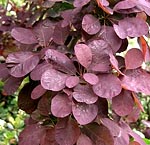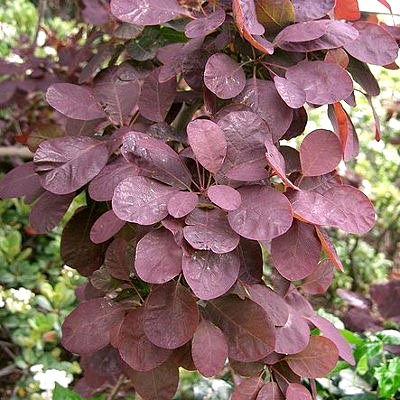Roses for the garden
Tom Coward from Gravetye Manor explains his choices when it comes to roses, including the more wild roses of the species


** If you want to buy any of the plants mentioned below for your own garden, visit www.countrylife.co.uk/nursery
and type or copy and paste the name into the search. Plants are
delivered in sturdy boxes in a matter of days from one of the finest
nurseries in the country. **
Roses have been important at Gravetye Manor since the garden's 19th-century founder, William Robinson, first used them in some of the most innovative mixed borders of his time. Today, we try to manage these borders as progressively as Robinson would have done, bearing in mind the initial atmosphere he created, so this winter, we're planting more roses to preserve their presence in this historic garden.
Modern, repeat-flowering shrub roses work well in our mixed borders, as do a lot of the Hybrid Tea and Floribunda cultivars both new and old. However, it's important not to forget the wild species, some of which have a dignified elegance and charm.
Rosa moyesii creates a loose, open shrub, growing 8ft tall in favourable conditions, with handsome dark-green foliage. Like most species roses, it only flowers once, in June, bearing pretty, single flowers of a deep, rich pink colouring. It's worth growing the plant for these alone, but soon after they fade come the large, scarlet pear-shaped hips that stay deep into winter. Shortly after its discovery in 1894 in Tibet, Robinson wrote: ‘Men talk of getting fine things by crossing this but they will never get anything so good'.
Exquisite houses, the beauty of Nature, and how to get the most from your life, straight to your inbox.
I think he was correct, although there's an attractive descendant called Geranium, with orangey-red flowers. A friend of mine grows it to great effect against the dark-aubergine foliage of Cotinus coggygria Royal Purple. One of our best species roses is R. glauca, bearing long, arching stems, also to about 8ft. Its greatest asset is its foliage, which is blue-grey-purple in full sun, and slightly more grey in shade. Its beautiful colour is emphasised by red-tinged young stems, which, in turn, add subtle interest to the winter texture of the border. Its delicate pink flowers in early summer are very appealing, set against the shimmering foliage.
Later, small, cherry-red hips emerge-the cherry on the cake! One of the nicest plant combinations we achieved this year was by pairing R. glauca with the pink-flowered Diascia personata, which scrambled through its foliage all summer. Rosa × odorata Mutabilis is a hybrid from two wild species: R. chinensis and R. gigantea.

Cultivated in China long before being introduced to Europe in the early 19th century, it's a repeat-flowerer thanks to its R. chinensis parentage-the most important ancestor of all modern repeat-flowering cultivars. Growing to about 6ft, Mutabilis opens its first flowers as early as mid May. At first, they're rich honey yellow, then a coppery-pink, followed by watermelon and, finally, a rich mahogany.
The resulting multicoloured display continues all the way through to October, making it one of our favourite anchor plants in the border, whether it's joined by lupins in the early season or salvias later on. Winter is the best time to buy and plant roses, but if you have the patience, it's worth propagating them from hardwood cuttings, whether taken from your garden or those of friends. And if you see a rose you'd like to try, it's always worth asking the gardener if they'll give you a cutting. Healthy, vigorous wood from the previous season's growth can be harvested any time in autumn until early December.
Take approximately 9in-long cuttings just above a bud at the top and just below one at the base. Dip the base into hormone rooting powder and line out the cuttings, 6in apart in soil that's previously had a lot of grit worked in, to aid drainage. Some rose varieties root more easily that others, but with luck, they should develop into healthy young plants by the following year, when they can be lifted and planted out into the border. Also, in a year's time, surplus plants will make lovely Christmas gifts when potted and wrapped.
Country Life is unlike any other magazine: the only glossy weekly on the newsstand and the only magazine that has been guest-edited by His Majesty The King not once, but twice. It is a celebration of modern rural life and all its diverse joys and pleasures — that was first published in Queen Victoria's Diamond Jubilee year. Our eclectic mixture of witty and informative content — from the most up-to-date property news and commentary and a coveted glimpse inside some of the UK's best houses and gardens, to gardening, the arts and interior design, written by experts in their field — still cannot be found in print or online, anywhere else.
